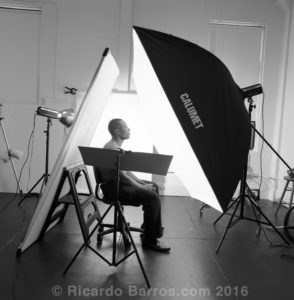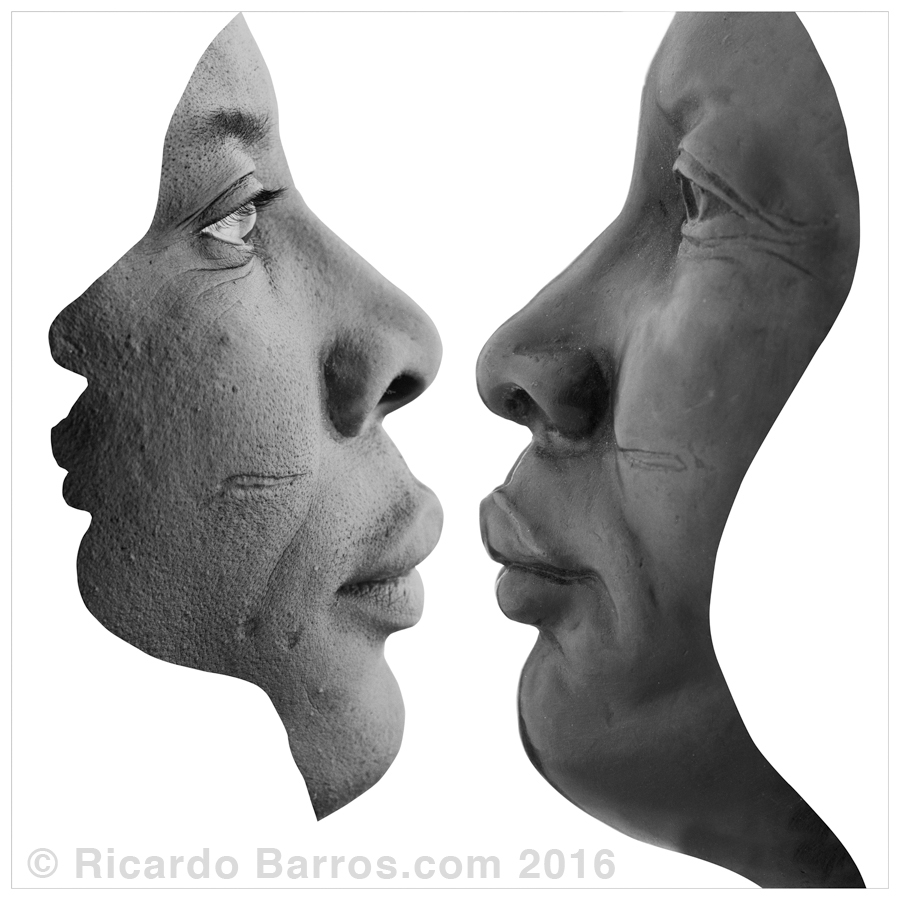 The response to a work of art can be as creative and as interpretive as the artwork itself. Such is the underlying premise of my book, “Facing Sculpture: A Portfolio of Portraits, Sculpture and Related Ideas.” This portrait arose from that premise.
The response to a work of art can be as creative and as interpretive as the artwork itself. Such is the underlying premise of my book, “Facing Sculpture: A Portfolio of Portraits, Sculpture and Related Ideas.” This portrait arose from that premise.
Joseph Acquah is a sculptor from Ghana whom I met when we both worked at a sculpture foundry in Trenton. Joseph made a remarkable self-portrait in bronze, inspiring the photograph I made and published in my 2004 book. My first portrait of Joseph, as well as its story, can be found here.
During that photo session in 2000 I had a second idea for Joseph’s portrait. This second concept addressed introspection, rather than verisimilitude. Completion of the final photograph would get sidetracked for years, but my vision was clear and I collected the necessary elements at that one sitting. The portrait wasn’t actually assembled until 2009, when I was asked to provide a cover image for a literary magazine, The Trenton Review.
I digitally scanned the three negatives shot years before: a silhouette of the bronze bust, a close-up of the bronze in profile, and a close-up of Joseph in profile. Using the silhouette as a delimiter, I placed Joseph’s human face into the silhouette but looking backward, peering into the back of his own head. There he encounters his likeness in bronze.
The artist and his artwork are one, yet at the same time they are separate. One cannot see both the complete profile and the two faces contained therein simultaneously. For me, this portrait is more than a visual paradox. It is a metaphor for art itself.


